Cassin’s Finch
The Cassin’s finch, a North American bird is named after the curator of Philadelphia Academy of Natural Sciences, Mr. John Cassin. The species is often found at higher altitudes.
Scientific Classification
| Kingdom | Animalia |
| Phylum | Chordata |
| Class | Aves |
| Order | Passeriformes |
| Family | Fringillidae |
| Subfamily | Carduelinae |
| Genus | Haemorhous |
| Scientific Name | Haemorhous cassinii |
Quick Information
| Description | Size: 5.7-6.3 in (14.416 cm) Weight: Around 0.97 oz (27.5 g) Color: Males have pink body with a reddish-pink crown, the streaked nape is brown, the back is also streaked but in pale pink, the breast and the beak both are light pink and the belly is white. Females have pale brown and streaked underparts, the eyebrows are pale and the undertail coverts are streaked |
| Distribution | New Mexico, Southern California, and Arizona |
| Habitat | Conifer forests of high mountains, scrubby forests during the summer months |
| Sounds & Calls | Longer warbles than other finches’, during flight they emits “tee-dee-yip”, “pwee-di-lip”, and “kee-up” |
| Lifespan | Around 7 years |
| Diet | Seeds, fruits, moth larvae, butterflies and other insects |
| Adaptation | Their physical similarities with purple and house finches along with Cassin’s finches ability to mimic the call of those birds help them camouflage or drive away possible predators. The round belly of the bird makes it looks bigger and stronger together. The sharp talon helps the finch pick berries from trees and also fight its predators |
| Predators | Cooper’s hawks, northern pygmy owls, squirrels, gray jays, northern shrikes, and Sharp-shinned hawks |
| IUCN Conservation Status | Near Threatened |
Behavior
- Cassin’s finches crouch and stay in that position whenever they feel threatened. Despite being in a statue-like position, they just move their throats to produce alarming call in a low tone.
- They usually reside at higher altitudes but come down to lower elevations during winter months.
- They extend their neck towards the front with their closed bills and keeping the body in
a horizontal alignment to frighten their enemies. - Whenever a female looks for a nesting place, her male counterpart wards off other male finches from the place.
- Post-breeding, the finches join other birds pine siskins, evening grosbeaks, red crossbills, and other finch species.
Mating & Reproduction
During the breeding season, they make a pair and mate. Following that, the female makes a nest with twigs, weed stems, and rootlets where she lays 3-6 bluish green, black and brown spotted eggs. She incubates them for 12-14 days. The male usually feed the female during the phase.
Life-cycle
After hatching, the juveniles are fed by both the parents. After two weeks, the young ones leave the nest. They attain sexual maturity at around 1 year of age.
Interesting Facts
- The male finches look similar to a female during his first year, so female finches often ruffle their beautiful plumage to indicate that she is not a male.
- Cassin’s finches are known for their salt craving and they often fly to mineral deposits for satisfying the quench.
References
- https://www.allaboutbirds.org/guide/Cassins_Finch/lifehistory#
- https://www.audubon.org/field-guide/bird/cassins-finch
- https://www.nationalgeographic.com/animals/birds/facts/cassins-finch
Published on February 2nd 2019 by Sahana Kanjilal under Coniferous Forest Animals.
Article was last reviewed on 5th December 2024.


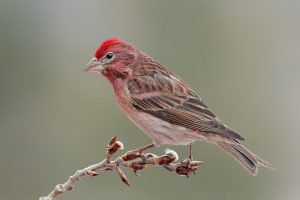
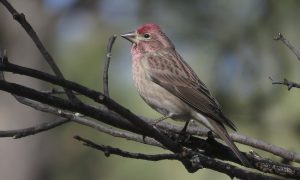
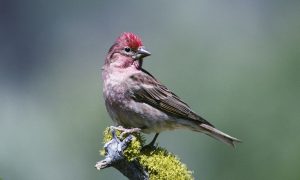
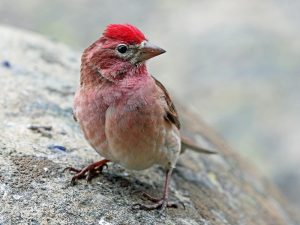
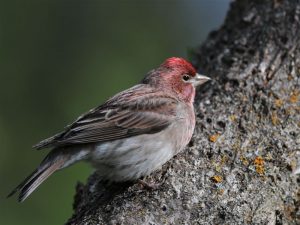
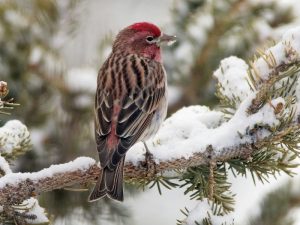
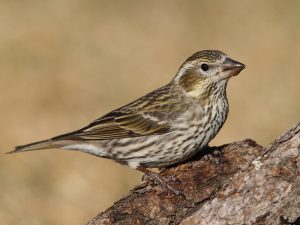

Saw one CASSIN FINCH on our bird feeder today.
Many flocks of ROBINS were everywhere in Wausaukee
before the Winter snow storm yesterday afternoon.